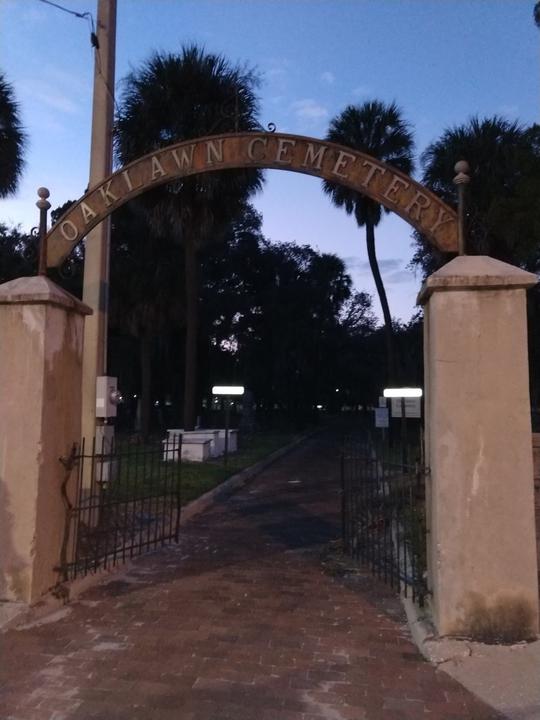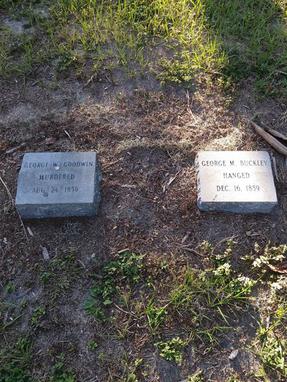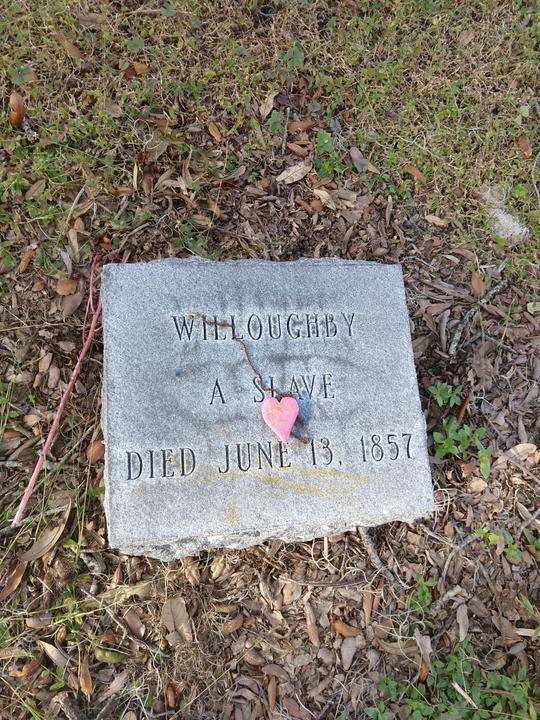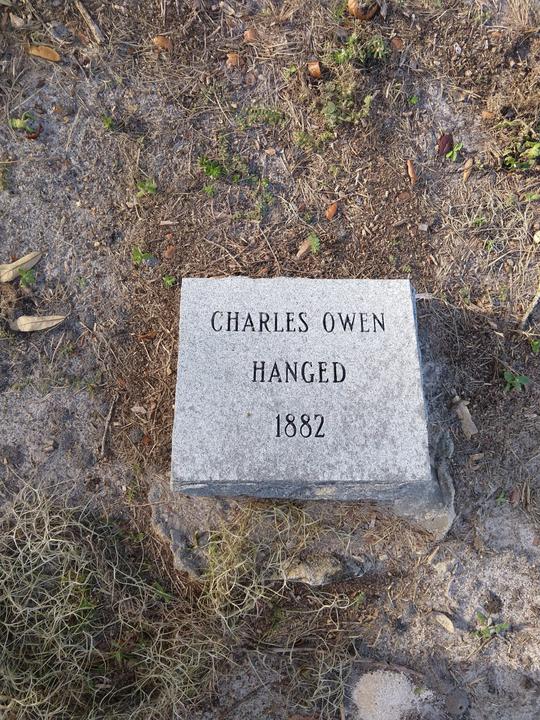Double click here to add text.
Oaklawn Cemetery
November 15, 2020
With quarantine still an issue for 2020, the SPIRITS opted to visit outdoor locations where we could social distance. We went to Oaklawn Cemetery, the oldest graveyard in Tampa, on a warm November afternoon. The group of six women stayed from 3 PM to 6 PM to look at the tombs, learn some Tampa history, and find out if the rumors of a ghost that roamed the cemetery at sunset were true.
Oaklawn Cemetery dates to 1850,when Tampa was a small former military town. About 500 people resided in the area and, even though it was small, the population needed a graveyard. Thus, at the next County Commissioners meeting, Oaklawn was created to be a public burying ground for "white and slave, rich and poor."
Grave markers were originally made of cypress wood as stone had to be imported into the area. There was no rail service (this starts in 1884) and wood seemed to be a viable option. However, the material was subject to fire, rot, and storms thus leaving many graves without a marker. On top of that, the original plat of the cemetery was lost after the Civil War, as were records of the earliest identities of the early internments.
Oaklawn hosts 13 city mayors, a Florida Governor (Henry Mitchell), two Florida Supreme Court Justices (Joseph B. Lancaster), and early pioneer families. A portion of the cemetery was set aside for slaves, pirates, and indigents. Oaklawn later joined with the St. Louis Catholic Cemetery, operated by the Diocese of St. Petersburg. (Remember that St. Petersburg was not named until the 1880s and it was considered a part of Hillsborough County until 1912).
A few other notables buried here include:
- James Cooley Field, a commercial photographer whose works document early Tampa life. He moved to the area for his wife's health but both she and their daughter passed away of tuberculosis.
- Joseph B. Lancaster, mentioned above, enjoys two gravesites. One is here in Oaklawn and the other in Jacksonville. Masonic records and the headstones confirm that he was buried in Oaklawn, and no one is quite sure how he obtained records for two gravesites on each side of the state.
- Perry G. Wall was a probate judge and postmaster of Tampa who married three times and had 9 children. One son was a veteran of the Civil War (a rarity as Florida had little to offer to the war beyond cattle for meat), and his grandson, Perry, was a later mayor of the city.
- J.T. Macabee was an attorney (one of the first in the area), a Florida State Constitutional Convention delegate, a Florida State Senator, a newspaper publisher, and a judge of the Circuit Court. He was also a known drunk and considered a scalawag (this is the name given to those who proclaimed alliance to the North just after the Civil War).
- William and Nancy Ashley's graves are another curious internment in Oaklawn. William Ashley was a prominent white civic leader serving as City Clerk. Nancy, his African-American servant, was his longtime companion and, it was presumed, also his wife outside the law. William died first, but after Nancy's death the community reopened his grave to receive Nancy's body as well. The two remain together in death just as they did in life.
- Charlie Wall, unlike his father, took a different path. He became associated with the local mafia and ran the illegal bolita (lottery) racket until he was displaced by the Sicilian Mafia. He survived several mob hits but was finally murdered in his home in 1955.
- A "negro man, Adam" was charged with murdering Luke Moore. He was jailed and tried, found guilty after two hours deliberation, and hung. His grave is in the cemetery.
- A most unusual coupling of graves occurs in one party of Oaklawn. George M. Buckley was tried for the murder of his father-in-law, George W. Goodwin. Though there were few witnesses in the case, Buckley was eventually found guilty of the crime. He, along with Adam (above) were hung on Friday, December 16, 1859. Buckley is buried next to his father-in-law. One tombstone says "murdered" and the other says "hanged".
There are also several areas of mass graves:
- Fort Brooke, Mass Grave: Adjacent to the Sexton Cottage, it has the remains of 102 soldiers and settlers that were originally interred at Fort Brooke. Fort Brooke was the original European settlement in the area founded in 1824. It was abandoned as a military post in 1832. As an aside, Fort Brooke parking garage, named for the structure (once housed at the mouth of the Hillsborough River) is alleged to be haunted.
- Yellow Fever Mass Grave: Tampa had five outbreaks of this disease from 1850 to 1905. To contain the virus during the worst outbreak (1887 - 1888) the dead were buried hastily in a mass grave. One irony is that a local doctor, John P. Wall, suggested that the disease spread due to mosquitoes. He was widely disbelieved at the time, despite being a surgeon during the Civil War. Wall later served as Tampa mayor, editor of the Sunland Tribune Newspaper, President of the Florida Medical Association, a State Representative, and founded the Florida Boards of Trade and Health. After his death, he was also buried in Oaklawn.
Ghost Stories:
On March 6, 1882, Charles Owen attempted to rob the home of a wealthy family and raped Ada, the daughter of the family. He was chased away by her father but left evidence of his crime behind: a knife said to belong to him was found at the scene. However, there was no trial for Mr. Owen as an angry mob demanded the keys to the jail from Sheriff D. Isaac Craft, dragged him from his cell and hung him from a tree just outside the cell.
Rumors have it that his ghost is seen walking around the cemetery with his neck at an odd angle. He is also said to manifest at sunset hanging from a tree (even though the original lynching spot was further away in the city). According to City Maps provided by the Tampa Bay History Center, the jail was located on Madison Street; that is where Owen was hung. A later jailhouse was built near the cemetery.
Research provided by JJ, article/photos by Brandy.





